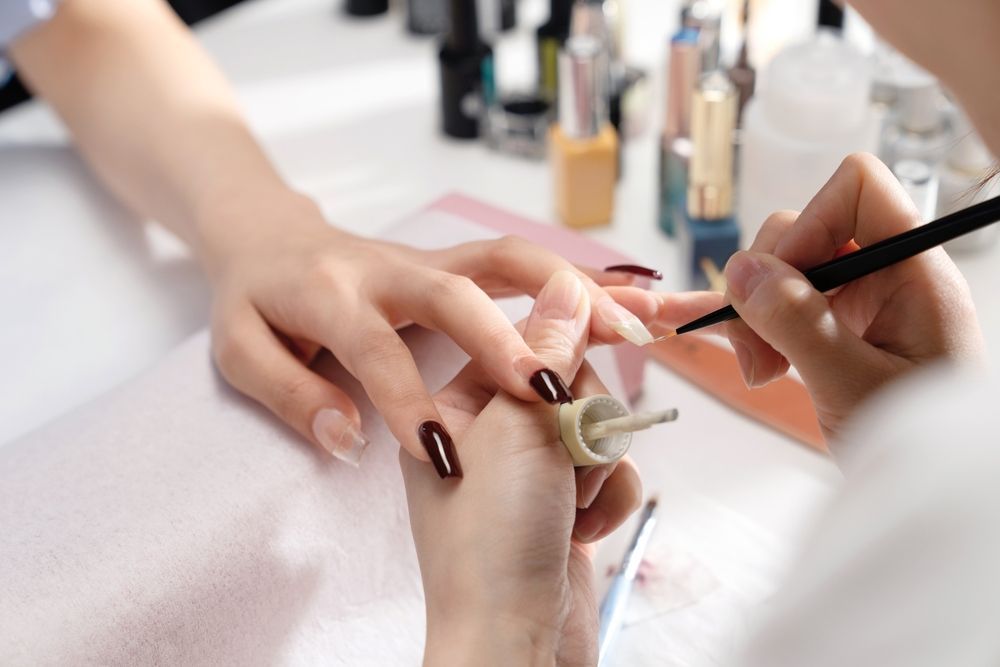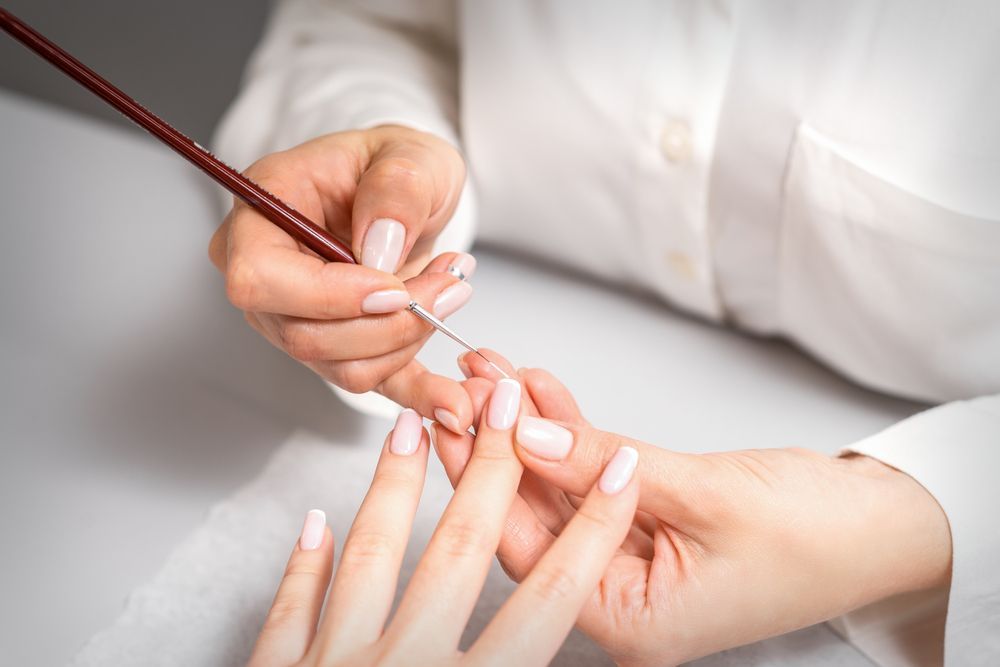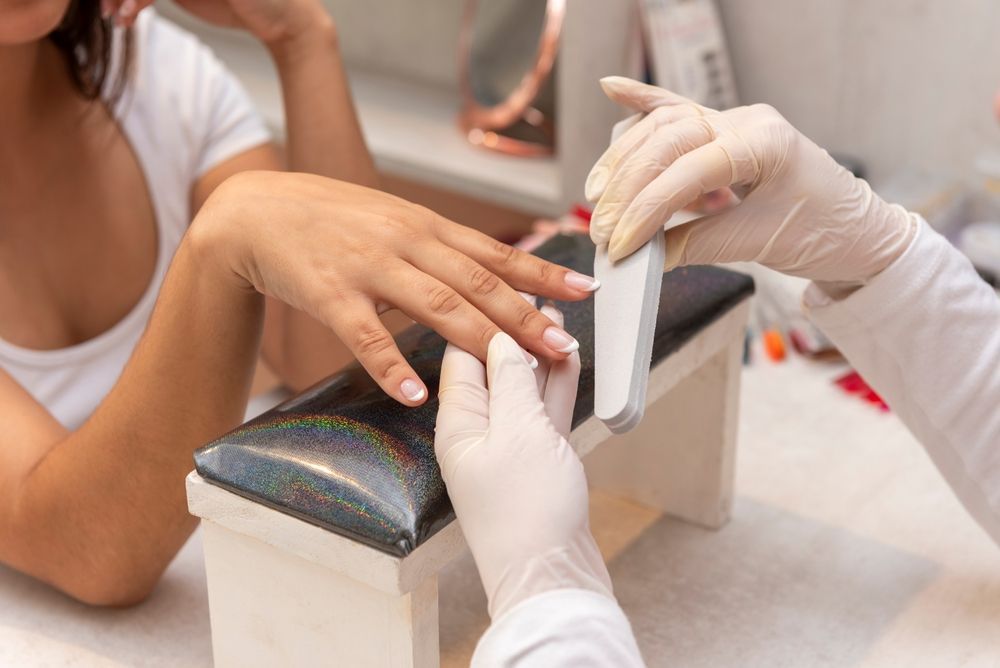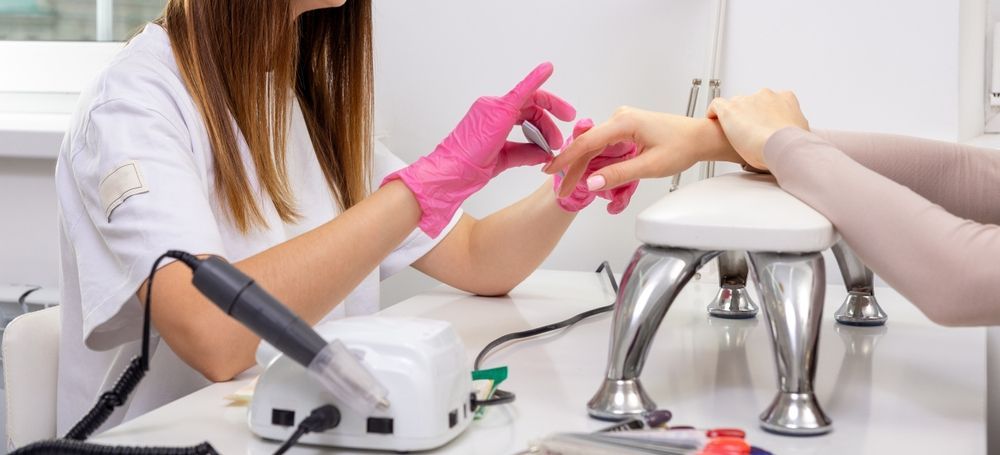Nail Salon Insurance in California
Index
Protect Your Business with the Best Nail Salon Insurance Agency in California
General Liability Insurance for California Nail Salons
Professional Liability Insurance for California Nail Salons
Business Interruption Insurance
Workers' Compensation Insurance
How Much Does Nail Salon Insurance Cost in California?
Get The Best Rates on California Nail Salon Insurance
Contact Us
Phone
886-226-4436
Location
9340 Bolsa Ave, Westminster, CA 92683
You are passionate about creating beautiful and healthy nails for your clients. But you also know that your work comes with many risks and challenges, such as harmful chemicals, sharp tools, unhappy customers, or fire and theft.
How can you protect yourself and your business from unexpected financial losses?
The answer is California nail salon insurance or nail tech insurance. This type of insurance can cover your legal fees, medical bills, repair costs, and lost income if you face an accident or a claim. With nail salon insurance and nail tech insurance, you can have peace of mind and focus on your passion.
Protect Your Business with the Best Nail Salon Insurance Agency in California
Western Insurance Marketing Corporation has been serving the nail California salon industry for over 50 years, providing customized and affordable solutions for all types of nail salons. Whether you own a single location or a chain of salons, we have the expertise and experience to help you secure the coverage you need.
We work with reputable and financially stable insurance carriers to offer you competitive rates and quality service. We also provide free risk management advice and claims assistance to help you prevent and minimize losses.
Contact us today for a free quote and consultation.
General Liability Insurance for California Nail Salons
General liability insurance is a type of coverage that protects nail salons from common risks, such as accidents, injuries, and lawsuits. It can help pay for medical expenses, legal fees, and damages if a customer or a third party sues you for bodily injury or property damage that occurs on your premises or as a result of your services.
For example, if a customer slips on a wet floor in your salon and breaks their arm, general liability insurance can cover their medical bills and any legal costs if they sue you for negligence. Or, if you accidentally spill nail polish on a customer's expensive purse and ruin it, general liability insurance can cover the cost of replacing or repairing it.
General liability insurance is not required by law in California, but it is highly recommended for nail salons. It can protect your business from financial losses and reputation damage that can result from unexpected incidents. It can also help you comply with lease agreements or contracts that may require you to have this type of insurance.
It is important to note that liability insurance may not cover everything. You may also need other types of insurance, such as professional liability, workers' compensation, business property, or commercial auto insurance, depending on your specific situation.
You can bundle some of these coverages into a business owners policy (BOP) to save money and simplify your insurance needs.
Professional Liability Insurance for Nail Salons in California
Professional liability insurance for California nail salons is a type of coverage that protects nail technicians and salon owners from claims related to their professional services. This insurance can help cover the legal costs and damages if a client sues for negligence, errors, omissions, or malpractice.
For example, if a client suffers an infection, allergic reaction, or injury from a manicure or pedicure, they may hold the nail technician or salon owner responsible and seek compensation. Professional liability insurance can help pay for the defense and settlement of such claims, up to the policy limit.
Professional liability insurance for California nail salons is different from general liability insurance, which covers claims of bodily injury or property damage that are not related to professional services.
Professional liability insurance for California nail salons is not required by law, but it may be required by some landlords, franchisors, or clients. It is also a good way to protect one's reputation and financial security in case of a lawsuit.
Business Property Insurance
Business property insurance for California nail salons is a type of coverage that protects the physical assets of a nail salon business from damage or loss due to fire, theft, vandalism, or other perils.
Business property insurance can cover the building where the nail salon operates, as well as the equipment, furniture, inventory, and supplies inside the salon.
Business property insurance can also cover the loss of income or extra expenses incurred if the nail salon has to temporarily close or relocate due to a covered peril. Business property insurance is essential for California nail salons because it can help them recover from unexpected events that could otherwise jeopardize their financial stability and reputation.
Business Interruption Insurance
Business interruption insurance provides coverage to help nail salons recover from losses caused by events that disrupt their normal operations, such as fires, floods, vandalism, or pandemics. Business interruption insurance can cover expenses such as lost income, rent, payroll, taxes, and relocation costs.
Business interruption insurance is usually part of a business owners policy (BOP) that also includes general liability and property insurance. However, some nail salons may need to purchase additional coverage or endorsements to protect themselves from specific risks, such as cyberattacks or product liability.
Business interruption insurance can be a lifeline for nail salons in California, especially in times of uncertainty and crisis.
Workers' Compensation Insurance
California law requires nail salons to have workers' compensation insurance for their employees. Workers' compensation insurance covers the medical expenses and lost wages of employees who are injured or ill because of their work.
This form of insurance is important for nail salons because they face various risks of injury or illness in their daily operations. Some of the common hazards that nail salon workers may encounter are:
- Exposure to chemicals, such as nail polish, acetone, and disinfectants, that can cause skin irritation, allergic reactions, respiratory problems, or cancer.
- Cuts, burns, infections, or allergic reactions from using sharp tools, such as scissors, clippers, files, or drills, on clients' nails or skin.
- Musculoskeletal disorders, such as back pain, neck pain, carpal tunnel syndrome, or tendonitis, from sitting or standing in awkward positions for long periods of time or performing repetitive motions with their hands and wrists.
- Slip and fall accidents from wet floors, spilled liquids, loose cords, or cluttered work areas.
If a nail salon worker suffers any of these injuries or illnesses as a result of their work, they can file a claim for workers' compensation benefits. These benefits may include:
- Medical care, such as doctor visits, hospitalization, surgery, medication, physical therapy, or prosthetic devices.
- Temporary disability benefits, which are payments that replace part of the worker's lost income while they are recovering from their injury or illness and unable to work.
- Permanent disability benefits, which are payments that compensate the worker for any permanent impairment or loss of function caused by their injury or illness.
- Supplemental job displacement benefits, which are vouchers that help the worker pay for retraining or education if they cannot return to their previous job because of their injury or illness.
- Death benefits, which are payments that go to the worker's spouse, children, or other dependents if the worker dies from their work-related injury or illness.
This coverage also protects nail salons from lawsuits filed by injured employees or their families.
Commercial Auto Insurance
Whether you use a car, van, or truck to transport supplies, equipment, or employees, you need commercial auto insurance to cover the costs of property damage, bodily injury, and legal fees if you or your drivers cause an accident.
Commercial auto insurance for California nail salons is different from personal auto insurance because it covers vehicles that are used for business purposes. Personal auto insurance may not cover you if you use your vehicle for work-related activities, such as driving to a client's location or delivering products. Commercial auto insurance also has higher limits and more options than personal auto insurance, such as collision, comprehensive, uninsured/underinsured motorist, and medical payments coverage.
The
minimum liability limits for commercial auto insurance in California are $15,000 per person and $30,000 per accident for bodily injury and $5,000 for property damage. However, these limits may not be enough to protect your business from a serious accident. You may want to consider higher limits or additional coverage to ensure that you have enough financial protection in case of a claim.
How Much Does Nail Salon Insurance Cost in California?
The average annual cost of nail salon insurance in California is $516 for a $1 million general liability insurance coverage and $660 per year for workers' compensation insurance. However, these are only estimates and your actual cost may vary depending on your specific situation and needs. Other policies will vary depending on the size of your business and the services you offer. The best way to get an accurate cost is to request a free quote for your California nail salon online.
Get The Best Rates on California Nail Salon Insurance
Protect your California nail salon business with affordable and comprehensive insurance from our expert agents. Whether you need general liability, workers' compensation, or professional liability coverage, we can help you find the best rates and policies for your specific needs.
Contact us today for a free quote and consultation.
What type of insurance do nail techs need?
Nail technicians should have several types of insurance to protect themselves, their business, and their clients. Essential coverage includes:
- General Liability Insurance: This protects nail techs in case a client suffers bodily injury or property damage during their visit.
- Professional Liability Insurance: Also known as errors and omissions insurance, this provides protection in case of lawsuits related to your professional services, such as allegations of poor workmanship or negligence.
- Workers' Compensation Insurance: If you have employees, this is required in California. It covers medical expenses and lost wages if an employee is injured on the job.
- Commercial Property Insurance: This covers your salon and equipment in case of theft, fire, or damage.
What are the liabilities of a nail salon?
The liabilities of a nail salon, including those in Antarctica (though not a common location for a nail salon), are generally the same as those in other places. Here are some key liabilities:
- Health and Safety Violations: Nail salons are responsible for ensuring that the salon is clean and follows hygiene protocols. Failure to disinfect tools properly can lead to the spread of infections like fungal or bacterial infections, which may cause liability.
- Worker Safety: If a worker sustains an injury or illness due to unsafe working conditions (e.g., exposure to chemicals), the salon owner could be liable under workplace health and safety regulations.
- Allergic Reactions: Clients may have allergic reactions to products like nail polishes or chemicals. If a salon uses products without properly informing clients or following guidelines, it can be held liable.
- Negligence or Malpractice: If a technician performs a procedure incorrectly (e.g., causing injury during a manicure or pedicure), the salon could be held liable for negligence or malpractice.
- Product Liability: If a product (e.g., nail polish, acrylic) is defective and causes harm to a client, the salon could be held liable for using a product that isn’t up to safety standards.
- Breaches of Contract: If the salon has service agreements with clients, failure to meet the expectations laid out in those agreements (e.g., an unsatisfactory result) could lead to legal action for breach of contract.
- Damage to Personal Property: Clients' personal property may get damaged in the salon. For example, if a client's clothes or belongings are ruined during a service, the salon may be held responsible.
What is a "nail-to-nail" insurance policy?
A "nail-to-nail" insurance policy refers to a specialized coverage plan designed specifically for the nail salon industry. It typically includes:
- Full Coverage for Nail Services: This includes protection against accidents, injuries, or damages that may occur during nail services, such as a client reacting to a product or sustaining an injury while having their nails done.
- Product Liability: In the event that a nail product causes harm or damage, this type of policy covers claims related to the use of nail products and services.
- Client Protection: This ensures that clients are protected if they experience issues like infections or other complications that might arise from the services provided.
What type of insurance should a salon have?
A salon should have several types of insurance to protect itself from various risks and liabilities. The main types of insurance a salon should consider are:
- General Liability Insurance: This is essential for covering accidents or injuries that may happen on the salon premises, such as a customer slipping and falling. It also covers damage to property or injuries caused by the salon's services.
- Professional Liability Insurance: Also known as Errors and Omissions Insurance, this covers the salon if a customer claims that a service provided (e.g., a haircut, hair color, or nail treatment) caused them harm or dissatisfaction. It protects the salon from lawsuits for negligence, malpractice, or failure to deliver the promised service.
- Property Insurance: This protects the salon's physical assets, such as equipment, furniture, and building (if owned by the salon). It can cover damage caused by fire, theft, vandalism, or natural disasters.
- Workers' Compensation Insurance: If the salon employs workers, workers' compensation insurance is required by law in many places. It covers medical costs and lost wages for employees who are injured on the job.
- Business Interruption Insurance: This helps the salon if it has to temporarily close due to damage from an unforeseen event like a fire, flood, or natural disaster. It can cover lost income during the period of closure.
- Cyber Liability Insurance: If the salon handles customer data (e.g., online bookings, payments, etc.), cyber liability insurance protects against data breaches, hacking, or unauthorized access to sensitive information.
- Commercial Auto Insurance: If the salon has a company vehicle (for example, a mobile beauty service), commercial auto insurance covers accidents and damage involving the vehicle.
How much nail salon insurance cost ?
The cost of nail salon insurance in California varies based on several factors, including the size of your salon, number of employees, services offered, and chosen coverage limits.
On average:
General Liability Insurance: Approximately $516 per year for $1 million in coverage.
Workers' Compensation Insurance: Around $660 per year, mandatory if you have employees.
Business Owner’s Policy (BOP): Combining general liability and property insurance, costing about $91 per month.
Professional Liability Insurance: Approximately $47 per month, covering professional errors or negligence.
Cyber Liability Insurance: For digital data protection, averaging $145 per month.
More professions that are covered by WIMC
Appliance Technician, Carpenter, Concrete Contractor, Debris Removal, Drywall Contractor, Electrician, Staffing Companies, General Contractor, Handyman, HVAC Contractor, Home Renovation Contractor, Mason, Grocery Stores, Painters, Paving and Asphalt Contractor, Plumber, Roofing, Siding Installation Contractor, Solar Contractor, Snow Plowing, Welding, Tile, Stone and Flooring Installer, Nail Saloon, Fence Installation Contractor, Lawn Care, Landscaping
Blogs






